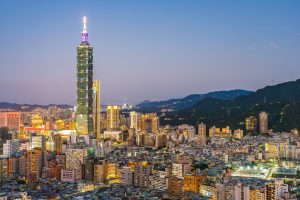If you think that China, India, or any other well-known country is the country with most languages. Then, you will probably be surprised to know that your guess is wrong.
In an ever-globalizing environment, linguistic diversity is intrinsically related to the preservation of cultural heritages, enabling inclusive dialogues, and fostering international cooperation. Indeed, there are more than 7000 languages spoken globally today but the question of what country has the most spoken languages still confuses a lot. Hence, this blog explores the top 10 countries with the highest language diversity and observes how this diversity shapes our world.
List of the Top 10 Countries with Most Languages in the World
| Rank | Country | Languages | Region |
| 1 | Papua New Guinea | 840 | Oceania |
| 2 | Indonesia | 710 | Southeast Asia |
| 3 | Nigeria | 520 | West Africa |
| 4 | India | 450 | South Asia |
| 5 | USA | 335 | North America |
| 6 | China | 301 | East Asia |
| 7 | Mexico | 290 | Latin America |
| 8 | Cameroon | 275 | Central Africa |
| 9 | Australia | 280 | Oceania |
| 10 | Brazil | 260 | South America |
1. Papua New Guinea
Papua New Guinea officially topped the list of the top 10 countries with the most spoken languages in the world. Do you know, that this unexplored group of island nations has 840 languages and a small population of just 8 million native people who speak? Therefore, it is a notable country with most languages spoken globally. The isolation of the country, caused by difficult mountains and dense rainforests, has created conditions in which hundreds of small communities develop their languages into distinct tongues with very little outside influence over thousands of years.
2. Indonesia
Indonesia is the largest country located in Southeast Asia that serves a large population on a total land mass of 1.905 million km², extending from north to south. Further, Indonesia has around 710 languages, the majority of which belong to the Austronesian and Papuan families. While Bahasa Indonesia is the official national language, it is the mother tongue of only 10% of the population living there. Indonesia’s enormous linguistic diversity reflects the migrant reins, native innovations, and colonial inputs that make up the history of the country over a long time.
3. Nigeria
Nigeria is often crowned as the most populous black nation in the world. Moreover, it represents remarkable ethnic and linguistic diversity. Don’t forget Nigeria when the topic is about the country with most languages. Nigeria is home to around 520 languages, of which English serves as the official language. When talking about the linguistic landscape of Nigeria. Then, the nation’s linguistic diversity represents pre-colonial tribal distributions, the impact of trans-Saharan trade routes, and artificial colonial boundaries that grouped different ethnic communities.
4. India
The Indian subcontinent is the land of seven significant nations, which has seen almost the same diversity, history, and cultural evolution for many centuries. The languages are quite diverse. While the Indian Constitution recognizes 22 of them as scheduled, in reality, the number of languages goes beyond 450. Hindi, however, is the most commonly spoken language in India. India has a richly endowed heritage in terms of culture as well as history. It has a plethora of languages from the migration of people through prehistoric times, much from the invasions and interminglings through the ages.
5. United States of America
The USA is home to approximately 340 million people. The country continues to be shaped by immigration from around the globe.
While English dominates the nation, around 430 languages are spoken across American homes. It is no surprise that we assume English is the official tongue of the nation, but in reality, there is no official language of the country. America’s linguistic overlook reflects its history as both the homeland of hundreds of Native American tribes and as a nation built by successive waves of immigration. In short, Languages spoken in the US are directly influenced by its Native tribes and frequent immigration.
6. China
China may stand tall in the population aspect, but it is shocking to know that this massive country doesn’t come in the top 5 list of country with most languages.
Despite the common myth we have that China is linguistically homogenous and has only Mandarin Chinese, it hosts about 301 living languages that are spoken nationwide. The written standard Chinese promotes unity even though it is spoken in a purely different form. You can learn more about languages in China and its various dialects in detail.
7. Mexico
The South American and USA-bordered country, Mexico, has around 131 million people, which represents a blend of Indigenous, Spanish, and Afro-Caribbean descent. Spanish is a natural tongue to over 90 percent of Mexicans but the country is home to 68 officially recognized indigenous language groups that include 290 varieties, such as Nahuatl and those of Maya origin. Moreover, Mexico’s diversity of languages is confined largely to the indigenous people. This nation has been colonized by Spain for decades in the past, but it is to be appreciated that they managed to sustain their original culture and linguistic diversity.
8. Cameroon
Next comes a country situated in the middle of Central Africa. It is amazing to know that with over 280 indigenous languages, Cameroon demonstrates remarkable linguistic density. Adding on, French and English serve as official languages that create a complex trilingual environment for many citizens.
Cameroon spot at the crossroads of major African language families, consequently enriching diversity. This additional multiplicity is the legacy of colonial French and British rule.
9. Australia
Australia is not only known for its English-speaking population, but it also houses an indigenous linguistic heritage, which very few people know. The pre-colonial Australia was home to around 260 Aboriginal languages. Today, this number has dwindled to roughly 120. Of this number, just 13 are not termed ‘endangered’. Furthermore, the history of the linguistic diversity of Australia stretches back for more than 65,000 years of indigenous habitation. Colonial policies aimed to impede language transmission. However, the revitalization of some Aboriginal languages has occurred in some recent decades.
10. Brazil
Brazil is South America’s largest country, where its 212 million citizens are primarily united by Portuguese but represent diverse ethnic backgrounds. Adding on, Brazil is the homeland of around 228 languages, and Portuguese is the official as well as national language. Moreover, Brazil’s linguistic diversity spells out quite an extensive connection between its indigenous heritage and its colonial history.
The Impact of AI on Language Diversity
As we have examined the top 10 global linguistic diversity in the above section, it’s also important to note how emerging technologies are reshaping language preservation and usage worldwide.
AI-Driven Preservation
AI-powered tools now enable efficient documentation of endangered languages through the help of automated transcription and analysis. Adding on, smart translations improve access to information in minority languages.
Challenges of AI
However, AI has posed some challenges to the maintenance of linguistic diversity. Training data for most AI models has been produced in major languages, such as English, Mandarin Chinese, and Spanish. As technology continues to mediate communication, it becomes more and more a challenge to strike a balance between advancing technology and preserving authentic language communities.
Businesses relying solely on automated tools risk miscommunication in multilingual markets. That’s where professional localization services come in. Learn more about our translation services on our website.
Way Forward
With cultural sensitivities in mind, translation services help organizations negotiate an extremely complex linguistic barrier. The question of what country has the most spoken languages certainly makes for interesting trivia, but more important is understanding the value of this diversity, which helps in effective global communication.
Is language a barrier between you and your communication? Then contact us today and learn how you can enjoy effective contact with global audiences through our professional localization services.





